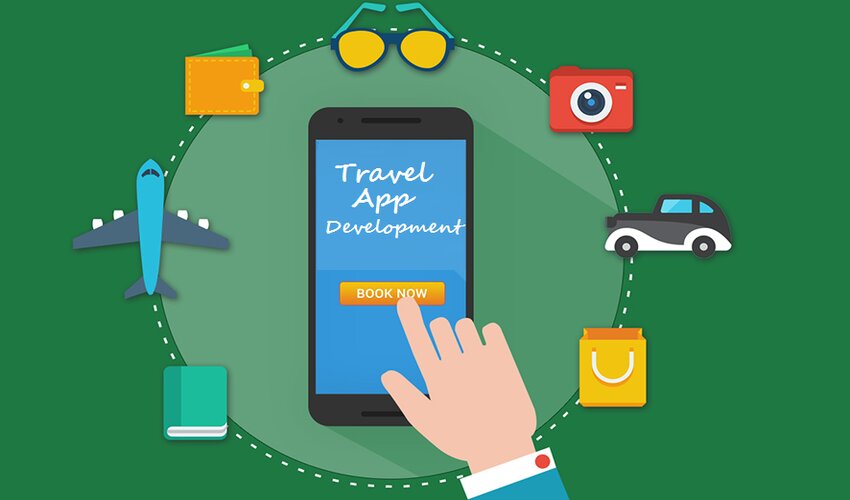
Traveling is all about the thrill of the unknown – the unexpected detours, the unforeseen adventures, and the joy of discovery. But when it comes to travel app development, those unexpected twists can be less of an exhilarating journey and more of a maze. Every app developer knows the challenges: trying to predict the whims of modern travelers, ensuring real-time accuracy, and standing out in an already bustling market. But just like any seasoned traveler, with a bit of prep and some trusty ‘maps’ (or solutions), we can navigate our way to success. Let’s dive into the bumpy road of travel app development and the tricks to stay on course.
1. Keeping Up With Ever-Changing User Preferences
The Challenge: The modern traveler is an ever-evolving entity with an appetite for more than just basics. They’re not just seeking a trip; they’re after an experience, a story to tell. This quest for personalized and unique experiences means their preferences are constantly shifting, making it challenging for developers to keep up.
Solution: Embracing a user-centric design isn’t just a strategy; it’s a mindset. It means tuning into the users’ frequencies and anticipating their needs. Regular feedback loops through surveys and focus group discussions can help in understanding emerging trends. Prototyping isn’t just for design; use it as a tool to test new features and gauge user reactions. Always be in ‘listen mode’ to your user base, and pivot as necessary. It’s about sailing with the wind of user preferences, not against it.
2. The Integration Hurdle of Real-Time Data
Challenge: Nothing dampens the traveler’s spirit like outdated information. The euphoria of spotting a perfect flight deal can quickly turn to frustration if that deal has already flown the coop. This underscores the need for real-time data synchronization.
The Solution: Choosing the right API goes beyond just its primary function; it’s about reliability and speed. A good flight price API should be more than accurate; it should sync in real time. Ensure that your backend can handle such frequent updates and has mechanisms in place to handle any discrepancies. It’s about ensuring the bridge between user expectations and app data is strong and reliable.
3. Standing Out in a Sea of Sameness
Challenge: The travel app market is saturated. With many apps offering similar features, it’s easy to be just another fish in the sea. It’s difficult to just exist when competing with others for attention and favor.
Solution: Every app needs to have a “wow” factor that causes users to exclaim, “This is exactly what I was looking for!” This could be a unique feature or a particular niche you cater to. Maybe it’s an AI assistant that plans trips based on user moods or an emphasis on sustainable travel options. Dive deep, identify gaps in the market, and tailor your app to fill those gaps uniquely.
4. The Balancing Act of Features vs. Simplicity
Challenge: In the quest to be the best, it’s tempting to pack in feature after feature. But a jam-packed interface can be overwhelming, causing users to abandon ship.
Solution: The essence of great design is simplicity. Start with a clean, intuitive interface focusing on primary user needs. Real-time flight updates, easy booking systems, and clear itinerary views should be front and center. Once the basics are rock-solid, introduce advanced features, but always prioritize user experience. Every feature should add value, not complexity.
5. Battling the Connectivity Conundrum
Challenge: The world is vast, and while we’ve made leaps in connectivity, there are still spots where the internet is a luxury. An app that’s paralyzed without the internet restricts users and limits its potential reach.
Solution: Freedom from constant connectivity is a gift users will love. Develop your app with robust offline functionalities. Caching key information for offline use and enabling core functionalities ensures users remain engaged, whether they’re exploring a city’s urban jungle or an actual jungle. When they reconnect, ensure smooth syncing to update any offline activities.
Developers can design travel applications that resonate, engage, and keep a devoted user base by going deeply into the core of these difficulties and developing creative, user-centric solutions. The trip may be difficult, but with the appropriate strategy, the outcome will undoubtedly be amazing!
6. The Multilingual Maze
Challenge: In our interconnected world, a single app has the potential to reach corners far and wide. But with global reach comes linguistic diversity. Consider this: there are over 7,000 languages spoken worldwide. When you’re aiming for universal appeal, you’re not just translating words, but bridging cultures. This is the multilingual maze – ensuring your app resonates everywhere, from Tokyo to Toronto.
Solution: Localization is more than mere translation. It’s about cultural adaptation. When you localize, you’re not only changing the language but also adapting graphics, adjusting content to suit local tastes, and even tweaking functionality for regional preferences. It’s a fine dance of ensuring that a user in Seoul feels as considerate as one in Sao Paulo. Utilize professional translators who understand regional idioms and cultural nuances. Furthermore, always consider right-to-left script adaptation for languages like Arabic and Hebrew. By giving users content in their native tongue, you’re effectively saying, “We see you, and we value you.”
7. Ensuring Security in a Risky Digital Landscape
Challenge: The digital age, while remarkable, has its shadows. Every day, cyber threats evolve, becoming more sophisticated. Travel apps, which house personal itineraries, passport details, and credit card information, become lucrative targets for hackers. A security breach doesn’t only mean financial loss but a deep erosion of trust.
Solution: Protection is paramount. This begins by adopting a security-first mindset from the development stage itself. Use encrypted protocols like SSL for data transmission. Store sensitive information using encryption, and adopt best practices in password hashing. Regularly update and patch your software to fix vulnerabilities. Embrace two-factor authentication (2FA) as an additional security layer. Lastly, regularly conduct penetration testing – invite ethical hackers to find weak spots before malicious hackers do. Security is never a one-off; it’s an ongoing commitment.
8. Adapting to Diverse Device Ecosystems
Challenge: The digital landscape is no longer just about smartphones. People book trips from their tablets while lounging on the couch, check itineraries from their smartwatches at the gym, and even browse destinations from smart TVs. Each device, with its unique screen size and capabilities, presents a fresh set of challenges for app developers.
Solution: Enter responsive design – the knight in shining armor. Responsive design ensures that your app’s layout, images, and functionalities adjust seamlessly across devices. But it’s not just about shrinking or expanding content. It’s about reimagining how users interact with your app on different screens. Utilize flexible grids and layouts, resize images to save bandwidth, and prioritize essential features for smaller screens. Regular testing on various devices is crucial. Consider both the latest models and older versions to ensure a broad range of compatibility. Your goal? An app experience is as smooth as butter, regardless of the device.
Wrap-Up:
In the world of travel app development, it often feels like we’re blazing a trail through uncharted territory. Every twist and turn presents its unique challenges, from staying in tune with what travelers want to keeping our data on point and our interfaces user-friendly. But here’s the thing: every challenge is an opportunity in disguise. By truly listening to our users, prioritizing their safety, and staying innovative, we can craft apps that resonate. We may have a difficult road ahead of us, but with perseverance and enthusiasm, we will reach some pretty amazing places. We should thus continue our exploration jointly.

Aimee Garcia is a Marketing Consultant and Technical Writer at DailyTechTime. She has 5+ years of experience in Digital Marketing. She has worked with different IT companies.

